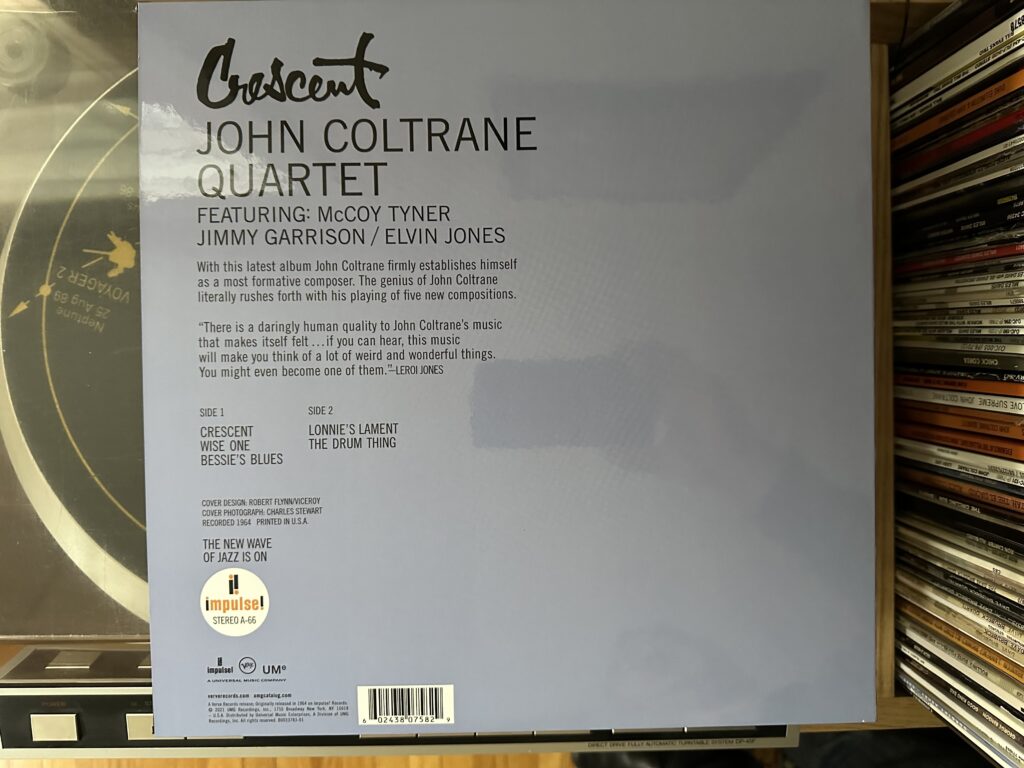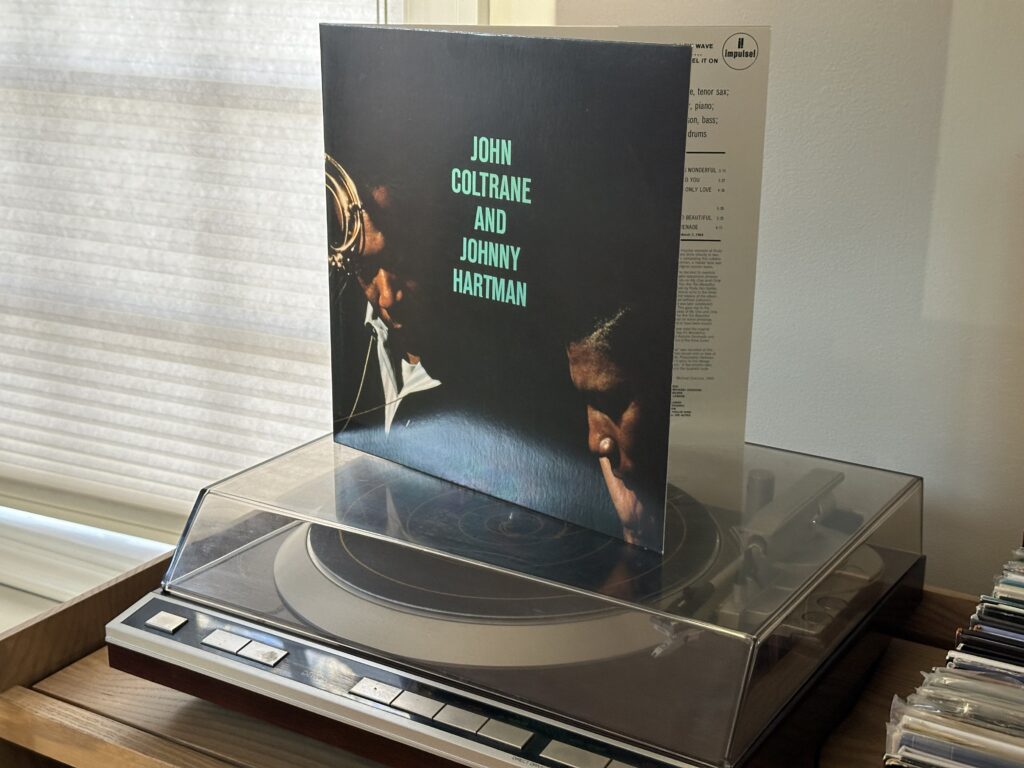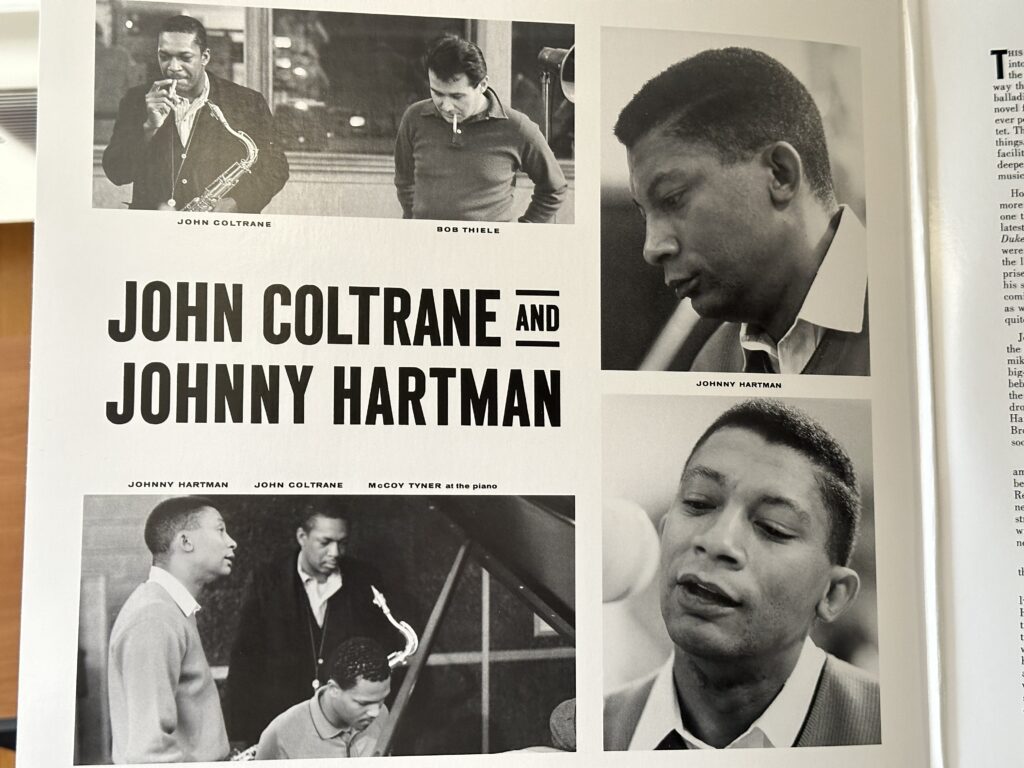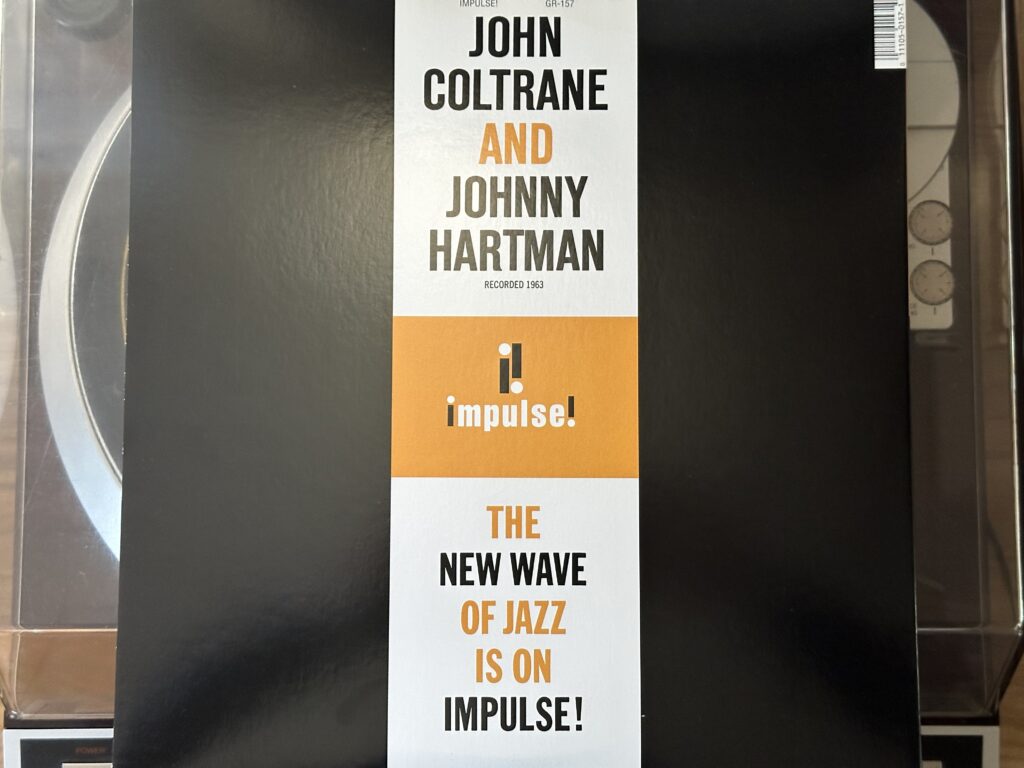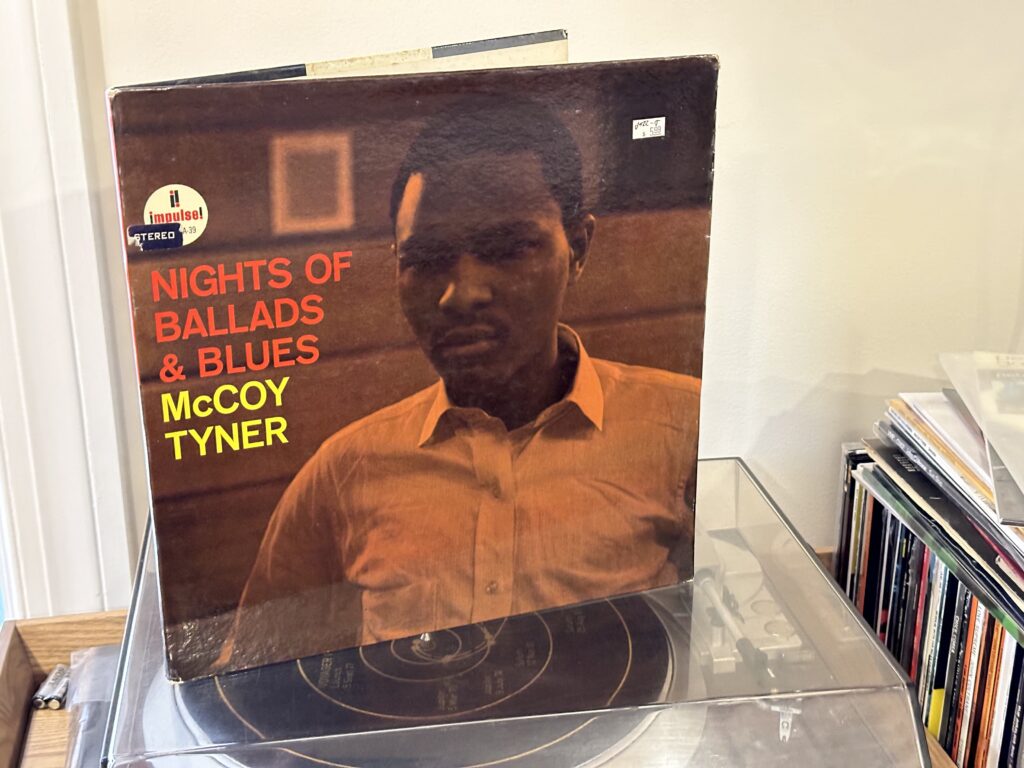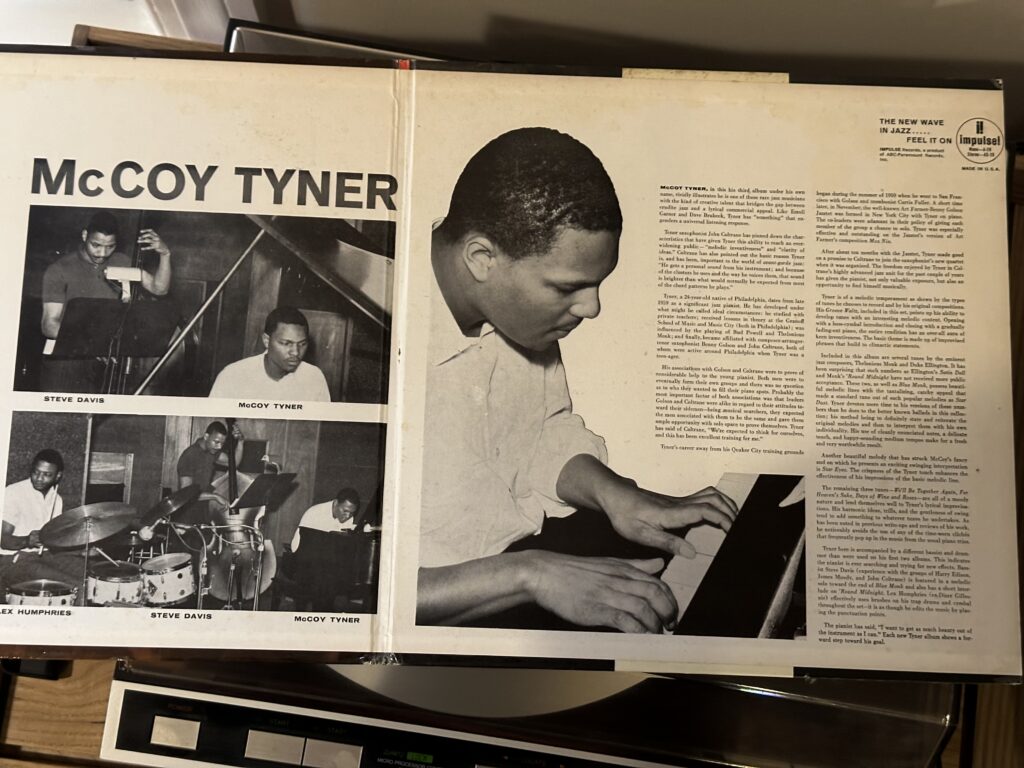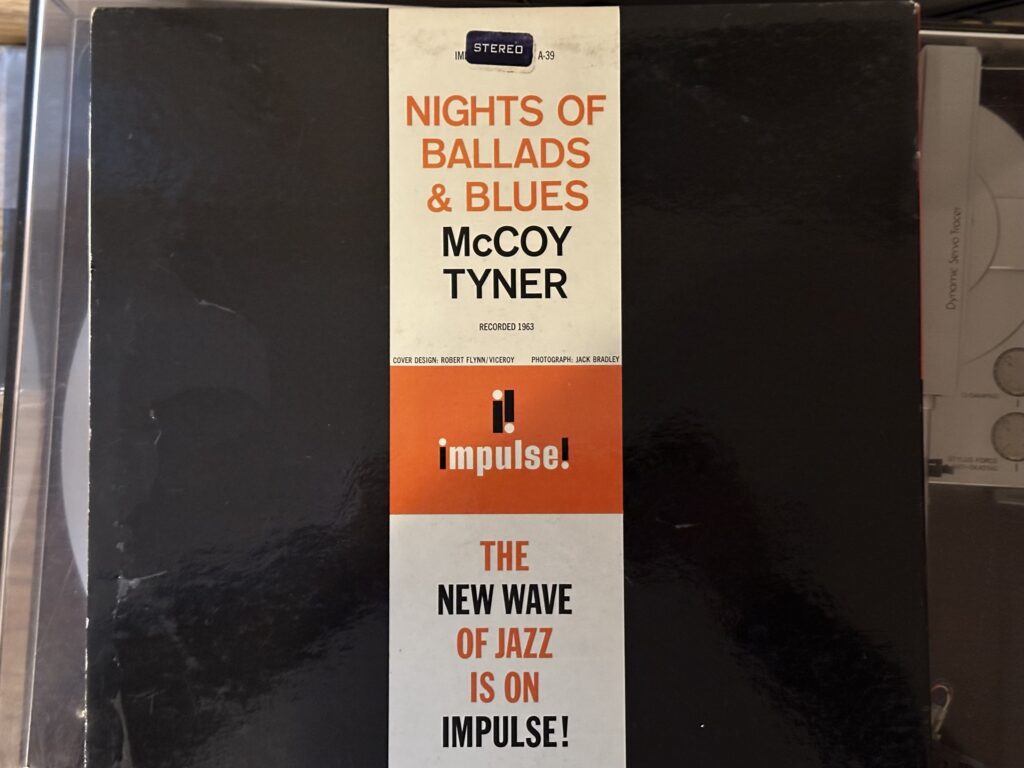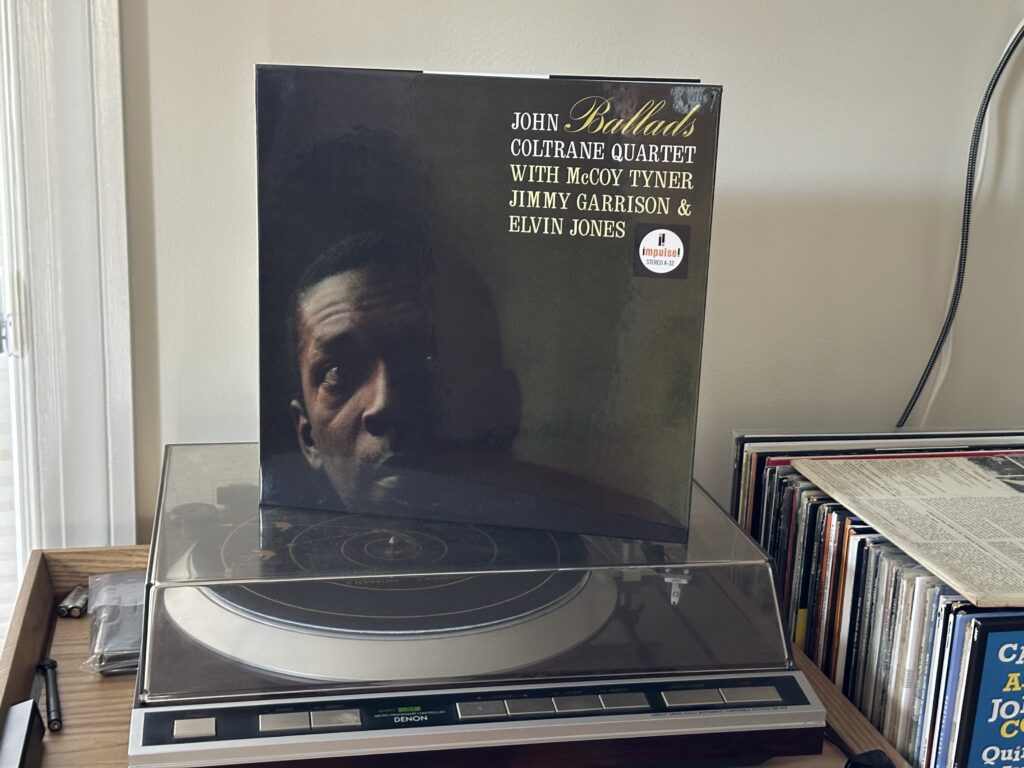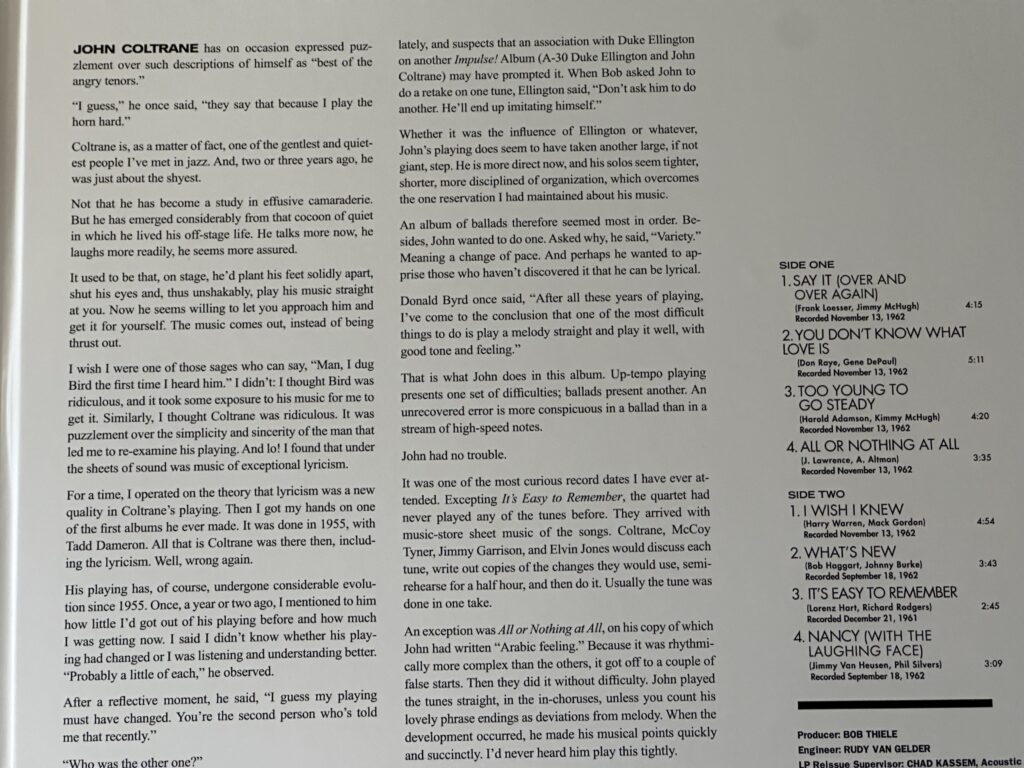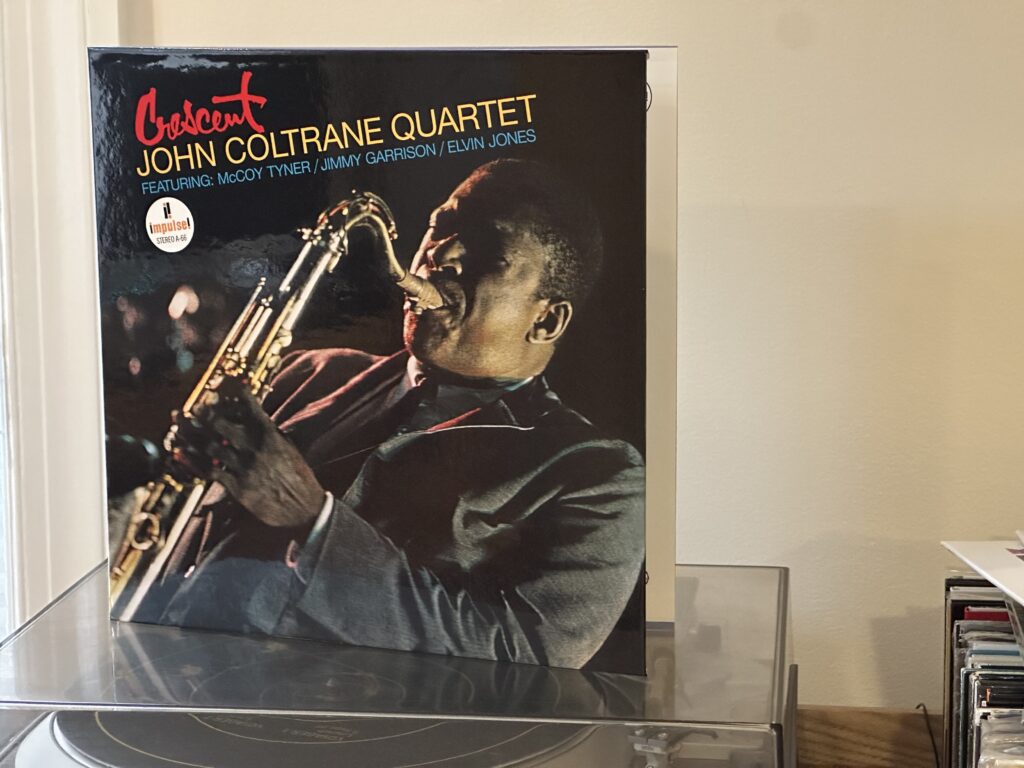
Album of the Week, February 24, 2024
After a European tour, the blistering Live at Birdland recording, and a little downtime, Trane and his quartet entered Rudy Van Gelder’s studio in Englewood Cliffs for a new recording session on April 27, 1964, with a subsequent one following on June 1. Unlike the prior session with Johnny Hartman, and the two studio albums preceding it, these sessions contained nothing but Coltrane originals. But, perhaps unlike the earlier sessions featuring Trane’s writing such as Giant Steps, these new sessions were infused with a deep sense of melody and a searching new tone.
The core inside these recordings arguably stretches back to Trane’s prior album, the misleadingly named Live at Birdland. Three of the tracks came from a live session recorded October 8, 1963 at the Birdland Club, but two were recorded on November 18 in the Van Gelder studio, and one of those tracks was “Alabama.” Trane’s memorial for the victims of the 16th Street Baptist Church bombing, which had happened just 63 days prior, has a darkness and intensity to it that repays repeated listening. Like his arrangements of “My Favorite Things” and “Greensleeves,” there is a modal core to the performance, but unlike those there is a depth of melodic line and searching that calls back to the ballad albums before. Suddenly the elements of the quartet — Elvin Jones’ explosive energy, Jimmy Garrison’s ascetic, precise, suspended bass lines, and McCoy Tyner’s block chords — gel around Trane’s sound to make something deeper and more … well, spiritual.
The phrase “spiritual jazz” was coined to describe the sound coming from Trane’s quartet at this time, and while it may smack uncomfortably of marketing, it’s not wrong. Trane is searching in these recordings for something that seems just out of reach, but when found brings a sense of deep joy.
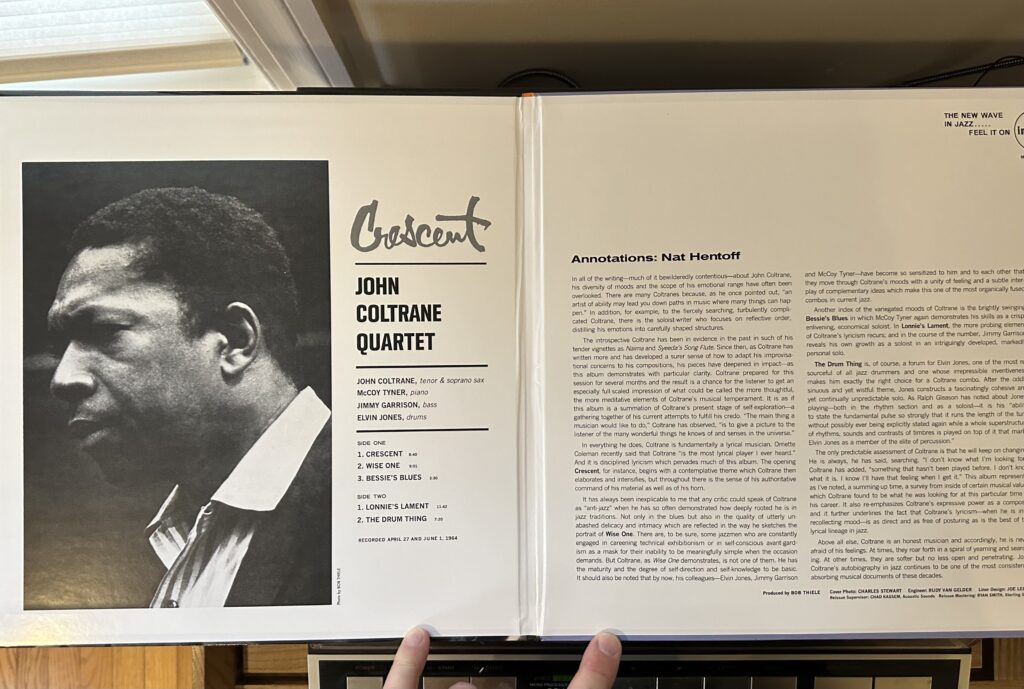
“Crescent”’s opening seems to encapsulate that search, as Trane conjures the melody out of a storm of clouds and a string of chords. While the chords of the tune come slowly, they are placed precisely, as though Trane and the band are carving them from stone. The solo has blistering runs, but also short passages of melodic variation so intense that Tyner drops out for a bit to give him more space. In some of the passages you hear Trane overblowing the horn, reaching beyond the normal tones of the saxophone into squeaks and smears and shouts of sound. Just as the tenor seems to have found a new shore, the band re-enters for a restatement of the opening, and where the first statement felt emergent, the reprise feels deliberate, a statement of affirmation, of discovery.
“Wise One” is a ballad in a minor mode, opened by Trane with a reflective solo taken out of time. McCoy Tyner picks up the tempo as the verse begins; his solo vamps in and out of the mode while Garrison plays suspensions on the fifth and octave and Elvin Jones provides a running pattern of regular eighth notes on the cymbals and syncopated hits on the tom. Trane picks up Tyner’s modulation when he picks up the tune from the middle eight, and then returns to the minor mode to close. It’s a stunningly reflective and lovely performance.
It’s ironic that “Bessie’s Blues” is the brightest, most uptempo work on the record, while maintaining the blues form. It’s also by far the shortest and happiest-sounding. Trane explores a set of different modes as he improvises, moving in and out of the chord structure so that Tyner lays out during the solo to give him the harmonic freedom to explore. The whole thing is loose and fun and has the feeling of something that emerged spontaneously in the studio, but in fact it is the second take of the tune, coming from the June sessions; the first take from April 27 wouldn’t appear until the 1998 Complete Impulse Recordings.
“Lonnie’s Lament” feels like a continuation of “Crescent,” which is more to say that Trane and his group were in a consistent mood for this album than to say anything about the melodies per se. The actual melody is nothing like “Crescent, “ but both open with a slow moving minor-key melodic line. Interestingly, “Lonnie’s Lament” came first, originating in shows that the Quartet played in late 1963, and its melody most closely shows the influence of the process that led to “Alabama.” The band follows Trane’s mood, staying subdued throughout the tune, pausing on the suspension that leads into the last corner of the melody, then charging ahead with a melodic bass solo from Jimmy Garrison, who seamlessly interchanges ideas with McCoy Tyner, soloing primarily in the right hand, then punctuating with big block chords in the left. Tyner’s solo takes off into a more rhythmic exploration of Trane’s melody, seamlessly passing to Garrison for an extended solo in triplets alternating with syncopated, loping steps, then transitioning into a freer rhythmic exploration of the tune. His solo here establishes him firmly as an equally contributing member of the quartet, with his distinctive contribution being the sense of space that he introduces throughout the solo. Trane takes no solo, returning to restate the melody at the end over rolls of thunder from Elvin Jones.
Jones, appropriately enough, opens the last track on the album, “The Drum Thing,” with a pulsing rhythm on the toms and bass drum, punctuated by a repeated bass pattern from Jimmy Garrison, an eighth-note upbeat on the fifth of the scale followed by a quarter on the upper tonic, repeating with the last upper tonic held as a dotted quarter. It’s hard to write it out, but you might vocalize it as “da-dum-da-dumm.” (You might also think it presages another famous bass melody in Trane’s work, and you’d be right, but that’s a story for another time.) Here it stays in the background as Trane enters, improvising a melody around the inverted fifth as Jones steps forward, playing a truly thunderous, explosive melody against the bass ground and exploring different timbres in the kit. He returns to his original pattern as Trane re-enters on a major key inspired version of the opening melody that modulates back to a recapitulation. The heartbeat carries throughout until the end, and it draws to a sudden close as if the only way to stop it was simply to stop.
There are multiple threads that come together in an ingenious, absorbing way on Crescent: the dark, mournful balladic melodies previously heard in “Alabama,” a new sense of space in Trane’s performance, a greater sense of independent voice from the other quartet members combined with some truly telepathic moments. It’s a brilliant record that deserves to be better known. Only the even greater brilliance of its successor stands in the way of that broader recognition, and we’ll hear why in due time. Next week, though, we’ll hear a little of what Trane and his group got up to in mid-1964.
You can listen to this week’s album here:
